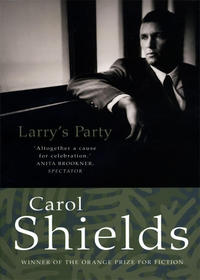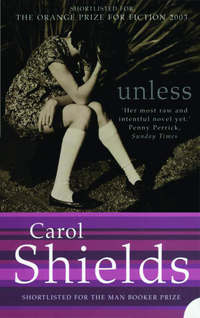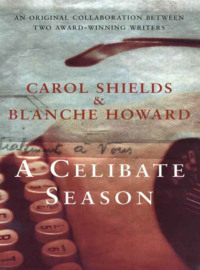
Полная версия
Collected Stories
On May 11, in the city of Exeter in the south of England, five girls (aged fifteen to seventeen) were running across a playing field at ten o’clock in the morning as part of their physical education program. They stopped short when they saw, lying on the broad gravel path, a dead parrot. He was grassy green in color with a yellow nape and head, and was later identified by the girl’s science mistress as Amazona ochrocephala. The police were notified of the find, and it was later discovered that the parrot had escaped from the open window of a house owned by a Mr. and Mrs. Ramsay, who claimed, while weeping openly, that they had owned the parrot (Miguel by name) for twenty-two years. The parrot, in fact, was twenty-five years old, one of a pair of birds sold in an open market in Marseilles in the spring of 1958. Miguel’s twin brother was sold to an Italian soprano who kept it for ten years, then gave it to her niece Francesca, a violinist who played first with the Netherlands Chamber Orchestra and later with the Chicago Symphony. On May 11 Francesca was wakened in her River Forest home by the sound of her parrot (Pete, or sometimes Pietro) coughing. She gave him a dish of condensed milk instead of his usual whole-oats-and-peanut mixture, and then phoned to say she would not be able to attend rehearsal that day. The coughing grew worse. She looked up the name of a vet in the Yellow Pages and was about to dial when the parrot fell over, dead in his cage. A moment earlier Francesca had heard him open his beak and pronounce what she believed were the words “Ça ne fait rien.”
On August 26 a man named Carl Hallsbury of Billings, Montana, was wakened by a loud noise. “My God, we’re being burgled,” his wife, Marjorie, said. They listened, but when there were no further noises, they drifted back to sleep. In the morning they found that their favorite little watercolor—a pale rural scene depicting trees and a winding road and the usual arched bridge—had fallen off the living-room wall. It appeared that it had bounced onto the cast-iron radiator and then ricocheted to a safe place in the middle of the living-room rug. When Carl investigated, he found that the hook had worked loose in the wall. He patched the plaster methodically, allowed it to dry, and then installed a new hook. While he worked he remembered how the picture had come into his possession. He had come across it hanging in an emptied-out house in the French city of St. Brieuc, where he and the others of his platoon had been quartered during the last months of the war. The picture appealed to him, its simple lines and the pale tentativeness of the colors. In particular, the stone bridge caught his attention since he had been trained as a civil engineer (Purdue, 1939). When the orders came to vacate the house late in 1944, he popped the little watercolor into his knapsack; it was a snug fit, and the snugness seemed to condone his theft. He was not a natural thief, but already he knew that life was mainly a matter of improvisation. Other returning soldiers brought home German helmets, strings of cartridge shells and flags of various sorts, but the little painting was Carl’s only souvenir. And his wife, Marjorie, is the only one in the world who knows it to be stolen goods; she and Carl belong to a generation that believes there should be no secrets between married couples. Both of them, Marjorie as much as Carl, have a deep sentimental attachment to the picture, though they no longer believe it to be the work of a skilled artist.
It was, in fact, painted by a twelve-year-old boy named Pierre Renaud, who until 1943 had lived in the St. Brieuc house. It was said that as a child he had a gift for painting and drawing; in fact, he had a gift merely for imitation. His little painting of the bridge was copied from a postcard his father had sent him from Burgundy, where he’d gone to conduct some business. Pierre had been puzzled and ecstatic at receiving a card from his parent, a cold, resolute man with little time for his son. The recopying of the postcard in watercolors—later Pierre saw all this clearly—was an act of pathetic homage, almost a way of petitioning his father’s love.
He grew up to become not an artist but a partner in the family leather-goods business. In the late summer he liked to go south in pursuit of sunshine and good wine, and one evening, August 26 it was, he and Jean-Louis, his companion of many years, found themselves on a small stone bridge not far from Tournus. “This is it,” he announced excitedly, spreading his arms like a boy, and not feeling at all sure what he meant when he said the words, “This is it.” Jean-Louis gave him a fond smile; everyone knew Pierre had a large capacity for nostalgia. “But I thought you said you’d never been here before,” he said. “That’s true,” Pierre said. “You are right. But I feel, here”—he pointed to his heart—“that I’ve stood here before.” Jean-Louis teased him by saying, “Perhaps it was in another life.” Pierre shook his head, “No, no, no,” and then, “Well, perhaps.” After that the two of them stood on the bridge for some minutes regarding the water and thinking their separate thoughts.
On October 31 Camilla LaPorta, a Cuban-born writer, now a Canadian citizen, was taking the manuscript of her new novel to her Toronto publisher on Front Street. She was nervous; the publisher had been critical of her first draft, telling her it relied too heavily on the artifice of coincidence. Camilla had spent many months on revision, plucking apart the faulty tissue that joined one episode to another, and then, delicately, with the pains of a neurosurgeon, making new connections. The novel now rested on its own complex microcircuitry. Wherever fate, chance or happenstance had ruled, there was now logic, causality and science.
As she stood waiting for her bus on the corner of College and Spadina that fall day, a gust of wind tore the manuscript from her hands. In seconds the yellow typed sheets were tossed into a whirling dance across the busy intersection. Traffic became confused. A bus skittered on an angle. Passersby were surprisingly helpful, stopping and chasing the blowing papers. Several sheets were picked up from the gutter, where they lay on a heap of soaked yellow leaves. One sheet was found plastered against the windshield of a parked Pontiac half a block away; another adhered to the top of a lamppost; another was run over by a taxi and bore the black herringbone of tire prints. From all directions, ducking the wind, people came running up to Camilla, bringing her the scattered pages. “Oh this is crazy, this is crazy,” she cried into the screaming wind.
When she got to the publisher’s office, he took one look at her manuscript and said, “Good God Almighty, don’t tell me, Camilla, that you of all people have become a post-modernist and no longer believe in the logic of page numbers.”
Camilla explained about the blast of wind, and then the two of them began to put the pages in their proper order. Astonishingly, only one page was missing, but it was a page Camilla insisted was pivotal, a keystone page, the page that explained everything else. She would have to try to reconstruct it as best she could. “Hmmmmm,” the publisher said—this was late in the afternoon of the same day and they sat in the office sipping tea—“I truly believe, Camilla, that your novel stands up without the missing page. Sometimes it’s better to let things be strange and to represent nothing but themselves.”
The missing page—it happened to be page 46—had blown around the corner of College Street and through the open doorway of a fresh fruit and vegetable stand, where a young woman in a red coat was buying a kilo of zucchini. She was very beautiful, though not in a conventional way, and she was also talented, an actress, who for some months had been out of work. To give herself courage and cheer herself up she had decided to make a batch of zucchini-oatmeal muffins, and she was just counting out the change on the counter when the sheet of yellow paper blew through the doorway and landed at her feet.
She was the kind of young woman who reads everything, South American novels, Russian folk tales, Persian poetry, the advertisements on the subway, the personal column in the Globe and Mail, even the instructions and precautions on public fire extinguishers. Print is her way of entering and escaping the world. It was only natural for her to bend over and pick up the yellow sheet and begin to read.
She read: A woman in a red coat is standing in a grocery store buying a kilo of zucchini. She is beautiful, though not in a conventional way, and it happens that she is an actress who—
Mrs. Turner Cutting the Grass
OH, MRS. TURNER IS A SIGHT cutting the grass on a hot afternoon in June! She climbs into an ancient pair of shorts and ties on her halter top and wedges her feet into crepe-soled sandals and covers her red-gray frizz with Gord’s old golf cap—Gord is dead now, ten years ago, a seizure on a Saturday night while winding the mantel clock.
The grass flies up around Mrs. Turner’s knees. Why doesn’t she use a catcher, the Saschers next door wonder. Everyone knows that leaving the clippings like that is bad for the lawn. Each fallen blade of grass throws a minute shadow that impedes growth and repair. The Saschers themselves use their clippings to make compost, which they hope one day will be as ripe as the good manure that Sally Sascher’s father used to spread on his fields down near Emerson Township.
Mrs. Turner’s carelessness over the clippings plucks away at Sally, but her husband, Roy, is far more concerned about the Killex that Mrs. Turner dumps on her dandelions. It’s true that in Winnipeg the dandelion roots go right to the middle of the earth, but Roy is patient and persistent in pulling them out, knowing exactly how to grasp the coarse leaves in his hand and how much pressure to apply. Mostly they come up like corks with their roots intact. And he and Sally are experimenting with new ways to cook dandelion greens, believing as they do that the components of nature are arranged for a specific purpose—if only that purpose can be divined.
In the early summer Mrs. Turner is out every morning by ten with her sprinkling can of chemical killer, and Roy, watching from his front porch, imagines how this poison will enter the ecosystem and move by quick capillary surges into his fenced vegetable plot, newly seeded now with green beans and lettuce. His children, his two little girls aged two and four—that they should be touched by such poison makes him morose and angry. But he and Sally so far have said nothing to Mrs. Turner about her abuse of the planet because they’re hoping she’ll go into an old-folks home soon or maybe die, and then all will proceed as it should.
High school girls on their way home in the afternoon see Mrs. Turner cutting her grass and are mildly, momentarily repelled by the lapped, striated flesh on her upper thighs. At her age. Doesn’t she realize? Every last one of them is intimate with the vocabulary of skin care and knows that what has claimed Mrs. Turner’s thighs is the enemy called cellulite, but they can’t understand why she doesn’t take the trouble to hide it. It makes them queasy; it makes them fear for the future.
The things Mrs. Turner doesn’t know would fill the Saschers’ new compost pit, would sink a ship, would set off a tidal wave, would make her want to kill herself. Back and forth, back and forth she goes with the electric lawn mower, the grass flying out sideways like whiskers. Oh, the things she doesn’t know! She has never heard, for example, of the folk-rock recording star Neil Young, though the high school just around the corner from her house happens to be the very school Neil Young attended as a lad. His initials can actually be seen carved on one of the desks, and a few of the teachers say they remember him, a quiet fellow of neat appearance and always very polite in class. The desk with the initials N.Y. is kept in a corner of Mr. Pring’s homeroom, and it’s considered lucky—despite the fact that the renowned singer wasn’t a great scholar—to touch the incised letters just before an exam. Since it’s exam time now, the second week of June, the girls walking past Mrs. Turner’s front yard (and shuddering over her display of cellulite) are carrying on their fingertips the spiritual scent, the essence, the fragrance, the aura of Neil Young, but Mrs. Turner is as ignorant of that fact as the girls are that she, Mrs. Turner, possesses a first name—which is Geraldine.
Not that she’s ever been called Geraldine. Where she grew up in Boissevain, Manitoba, she was known always—the Lord knows why—as Girlie Fergus, the youngest of the three Fergus girls and the one who got herself in hot water. Her sister Em went to normal school and her sister Muriel went to Brandon to work at Eaton’s, but Girlie got caught one night—she was nineteen—in a Boissevain hotel room with a local farmer, married, named Gus MacGregor. It was her father who got wind of where she might be and came banging on the door, shouting and weeping. “Girlie, Girlie, what have you done to me?”
Girlie had been working in the Boissevain Dairy since she’d left school at sixteen and had a bit of money saved up, and so, a week after the humiliation in the local hotel, she wrote a farewell note to the family, crept out of the house at midnight and caught the bus to Winnipeg. From there she got another bus down to Minneapolis, then to Chicago and finally New York City. The journey was endless and wretched, and on the way across Indiana and Ohio and Pennsylvania she saw hundreds and hundreds of towns whose unpaved streets and narrow blinded houses made her fear some conspiratorial, punishing power had carried her back to Boissevain. Her father’s soppy-stern voice sang and sang in her ears as the wooden bus rattled its way eastward. It was summer, 1930.
New York was immense and wonderful, dirty, perilous and puzzling. She found herself longing for a sight of real earth, which she assumed must lie somewhere beneath the tough pavement. On the other hand, the brown flat-roofed factories with their little windows tilted skyward pumped her full of happiness, as did the dusty trees, when she finally discovered them, lining the long avenues. Every last person in the world seemed to be outside, walking around, filling the streets, and every corner breezed with noise and sunlight. She had to pinch herself to believe this was the same sunlight that filtered its way into the rooms of the house back in Boissevain, fading the curtains but nourishing her mother’s ferns. She sent postcards to Em and Muriel that said, “Don’t worry about me. I’ve got a job in the theater business.”
It was true. For eight and a half months she was an usherette in the Lamar Movie Palace in Brooklyn. She loved her perky maroon uniform, the way it fit on her shoulders, the way the strips of crinkly gold braid outlined her figure. With a little flashlight in hand she was able to send streams of light across the furry darkness of the theater and onto the plum-colored aisle carpet. The voices from the screen talked on and on. She felt after a time that their resonant declarations and tender replies belonged to her.
She met a man named Kiki her first month in New York and moved in with him. His skin was as black as ebony. As black as ebony—that was the phrase that hung like a ribbon on the end of his name, and it’s also the phrase she uses, infrequently, when she wants to call up his memory, though she’s more than a little doubtful about what ebony is. It may be a kind of stone, she thinks, something round and polished that comes out of a deep mine.
Kiki was a good-hearted man, though she didn’t like the beer he drank, and he stayed with her, willingly, for several months after she had to stop working because of the baby. It was the baby itself that frightened him off, the way it cried, probably. Leaving fifty dollars on the table, he slipped out one July afternoon when Girlie was shopping, and went back to Troy, New York, where he’d been raised.
Her first thought was to take the baby and get on a bus and go find him, but there wasn’t enough money, and the thought of the baby crying all the way on the hot bus made her feel tired. She was worried about the rent and about the little red sores in the baby’s ears—it was a boy, rather sweetly formed, with wonderful smooth feet and hands. On a murderously hot night, a night when the humidity was especially bad, she wrapped him in a clean piece of sheeting and carried him all the way to Brooklyn Heights, where the houses were large and solid and surrounded by grass. There was a house on a corner she particularly liked because it had a wide front porch (like those in Boissevain) with a curved railing—and parked on the porch, its brake on, was a beautiful wicker baby carriage. It was here that she placed her baby, giving one last look to his sleeping face, as round and calm as the moon. She walked home, taking her time, swinging her legs. If she had known the word foundling—which she didn’t—she would have bounded along on its rhythmic back, so airy and wide did the world seem that night.
Most of these secrets she keeps locked away inside her mottled thighs or in the curled pinkness of her genital flesh. She has no idea what happened to Kiki, whether he ever went off to Alaska as he wanted to or whether he fell down a flight of stone steps in the silverware factory in Troy, New York, and died of head injuries before his thirtieth birthday. Or what happened to her son—whether he was bitten that night in the baby carriage by a rabid neighborhood cat or whether he was discovered the next morning and adopted by the large, loving family who lived in the house. As a rule, Girlie tries not to think about the things she can’t even guess at. All she thinks is that she did the best she could under the circumstances.
In a year she saved enough money to take the train home to Boissevain. She took with her all her belongings, and also gifts for Em and Muriel, boxes of hose, bottles of apple-blossom cologne, phonograph records. For her mother she took an embroidered apron and for her father a pipe made of curious gnarled wood. “Girlie, my Girlie,” her father said, embracing her at the Boissevain station. Then he said, “Don’t ever leave us again,” in a way that frightened her and made her resolve to leave as quickly as possible.
But she didn’t go so far the second time around. She and Gordon Turner—he was, for all his life, a tongue-tied man, though he did manage a proper proposal—settled down in Winnipeg, first in St. Boniface, where the rents were cheap, and then Fort Rouge and finally the little house in River Heights just around the corner from the high school. It was her husband, Gord, who planted the grass that Mrs. Turner now shaves in the summertime. It was Gord who trimmed and shaped the caragana hedge and Gord who painted the little shutters with the cut-out hearts. He was a man who loved every inch of his house, the wide wooden steps, the oak door with its glass inset, the radiators and the baseboards and the snug sash windows. And he loved every inch of his wife, Girlie, too, saying to her once and only once that he knew about her past (meaning Gus MacGregor and the incident in the Boissevain Hotel), and that as far as he was concerned the slate had been wiped clean. Once he came home with a little package in his pocket; inside was a diamond ring, delicate and glittering. Once he took Girlie on a picnic all the way up to Steep Rock, and in the woods he took off her dress and underthings and kissed every part of her body.
After he died, Girlie began to travel. She was far from rich, as she liked to say, but with care she could manage one trip every spring.
She has never known such ease. She and Em and Muriel have been to Disneyland as well as Disneyworld. They’ve been to Europe, taking a sixteen-day trip through seven countries. The three of them have visited the south and seen the famous antebellum houses of Georgia, Alabama and Mississippi, after which they spent a week in the city of New Orleans. They went to Mexico one year and took pictures of Mayan ruins and queer shadowy gods cut squarely from stone. And three years ago they did what they swore they’d never have the nerve to do: they got on an airplane and went to Japan.
The package tour started in Tokyo, where Mrs. Turner ate, on her first night there, a chrysanthemum fried in hot oil. She saw a village where everyone earned a living by making dolls and another village where everyone made pottery. Members of the tour group, each holding up a green flag so their tour leader could keep track of them, climbed on a little train, zoomed off to Osaka, where they visited an electronics factory, and then went to a restaurant to eat uncooked fish. They visited more temples and shrines than Mrs. Turner could keep track of. Once they stayed the night in a Japanese hotel, where she and Em and Muriel bedded down on floor mats and little pillows stuffed with cracked wheat, and woke up, laughing, with backaches and shooting pains in their legs.
That was the same day they visited the Golden Pavilion in Kyoto. The three-storied temple was made of wood and had a roof like a set of wings and was painted a soft old flaky gold. Everybody in the group took pictures—Em took a whole roll—and bought postcards; everybody, that is, except a single tour member, the one they all referred to as the Professor.
The Professor traveled without a camera, but jotted notes almost continuously into a little pocket scribbler. He was bald, had a trim body and wore Bermuda shorts, sandals and black nylon socks. Those who asked him learned that he really was a professor, a teacher of English poetry in a small college in Massachusetts. He was also a poet who, at the time of the Japanese trip, had published two small chapbooks based mainly on the breakdown of his marriage. The poems, sadly, had not caused much stir.
It grieved him to think of that paltry, guarded, nut-like thing that was his artistic reputation. His domestic life had been too cluttered; there had been too many professional demands; the political situation in America had drained him of energy—these were the thoughts that buzzed in his skull as he scribbled and scribbled, like a man with a fever, in the back seat of a tour bus traveling through Japan.
Here in this crowded, confused country he discovered simplicity and order and something spiritual too, which he recognized as being authentic. He felt as though a flower, something like a lily, only smaller and tougher, had unfurled in his hand and was nudging along his fountain pen. He wrote and wrote, shaken by catharsis, but lulled into a new sense of his powers.
Not surprisingly, a solid little book of poems came out of his experience. It was published soon afterward by a well-thought-of Boston publisher who, as soon as possible, sent him around the United States to give poetry readings.
The Professor read his poems mostly in universities and colleges where his book was already listed on the Contemporary Poetry course. He read in faculty clubs, student centers, classrooms, gymnasiums and auditoriums, and usually, partway through a reading, someone or other would call from the back of the room, “Give us your Golden Pavilion poem.”
He would have preferred to read his Fuji meditation or the tone poem on the Inner Sea, but he was happy to oblige his audiences, though he felt “A Day at the Golden Pavilion” was a somewhat light piece, even what is sometimes known on the circuit as a “crowd pleaser.” People (admittedly they were mostly undergraduates) laughed out loud when they heard it; he read it well too, in a moist, avuncular amateur actor’s voice, reminding himself to pause frequently, to look upward and raise an ironic eyebrow.
The poem was not really about the Golden Pavilion at all, but about three midwestern lady tourists who, while viewing the temple and madly snapping photos, had talked incessantly and in loud, flat-bottomed voices about knitting patterns, indigestion, sore feet, breast lumps, the cost of plastic raincoats and a previous trip they’d made together to Mexico. They had wondered, these three—noisily, repeatedly—who back home in Manitoba should receive a postcard, what they’d give for an honest cup of tea, if there was an easy way to remove stains from an electric coffee maker, and where they would go the following year—Hawaii? They were the three furies, the three witches, who for vulgarity and tastelessness formed a shattering counterpoint to the Professor’s own state of transcendence. He had been affronted, angered, half-crazed.








